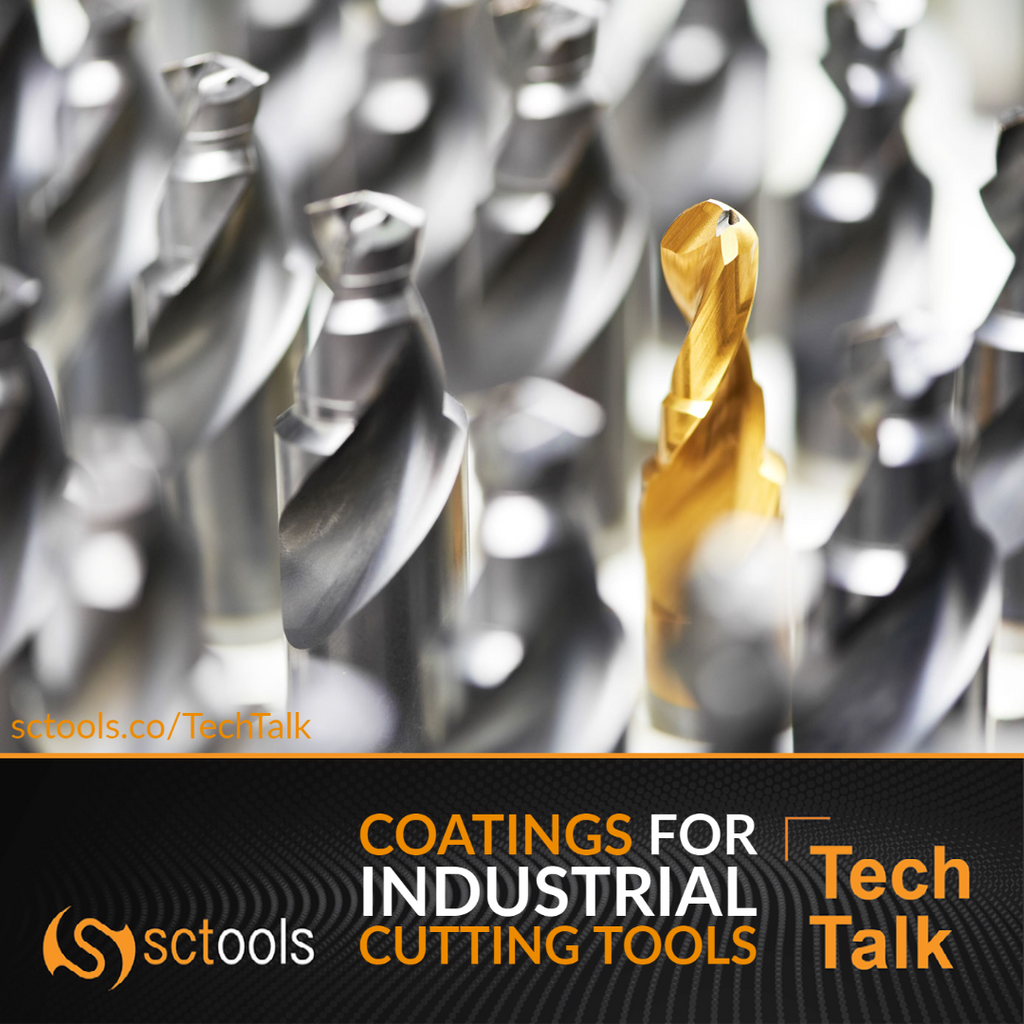.
TechTalk
"The very essence of leadership is that you have to have a vision." - Theodore Hesburgh
Coatings for Industrial Cutting Tools
Industrial Cutting Tools
Industrial cutting tools are essential in the automotive, aerospace, construction, and manufacturing industries. These tools provide uniformity, efficiency, and predictability for mass producers. However, when creating an efficient production line, the type of coating used on an industrial cutting tool is just as important as the tool itself. Read on to learn about the suitable coating and coating technique for your industrial cutting tool.
Why Coatings Matter
Most industrial cutting tools are made from a material known as cemented carbide. Cemented carbide tends to be more expensive than other materials and is known to be brittle and susceptible to chips and breaks.
All manufacturers want to extend the life of their industrial cutting tools to lower future costs, which is why so many choose to coat their industrial cutting tools. Coating an industrial cutting tool is done to increase the following characteristics of a substrate or high-speed steel:
Wear Resistance: Increases a substrate’s ability to resist material loss
Thermal Barrier: Increases the amount of heat a substrate can handle
Lubricity: Decreases friction in the cutting process
Coatings and their Functions
The main goal of the development of coatings has been to protect cutting tools from abrasive and adhesive wear. However, as coating technology continues to advance, developers have discovered other features that a coating can provide, such as heat resistance and friction reduction. Below we break down the different kinds of coatings and their functions regarding industrial cutting tools.
Titanium Nitride (TiN)
Titanium Nitride or TiN is known to be wear-resistant and to reduce friction and galling. It has a gold coloring and is the most popular of the coatings available. This coating has been known to improve the overall longevity of a tool by 2-10 times. It does not react with most materials and does not oxidize until 850 degrees Fahrenheit.
Titanium Carbide (TiC)
Titanium Carbide or TiC is a hard ceramic material. It improves the overall durability of the industrial cutting tool and easily adheres to cemented carbide. However, the material also has a low heat resistance and can be relatively brittle.
Titanium Carbonitride (TiCN)
Titanium Carbonitride or TiCN has a distinctive solid grey coloring with a hard, smooth finish. This coating works to improve durability and reduces the chances of chipping. TiCN provides thermal protection and increases lubricity.
Titanium Aluminum Nitride (TiAlN or AlTiN)

Titanium Aluminum Nitride or TiAIN has a nanolayered structure with a blue-purple coloring. On the other hand, the AlTiN has a black color, and both offer a higher surface harness that forms a hard heat-resistant coating. It has high ductility meaning it can withstand an incredible amount of deformatio\ without breaking. It is most commonly used in high-temperature environments above the limits of TiN.
Different Coating Methods
There are two different ways to coat an industrial cutting tool. CVD or chemical vapor deposition and PVD or physical vapor deposition.
Chemical Vapor Deposition
Chemical vapor deposition is the original coating technique and also the one most commonly used today. The coating process involves heating the material one wishes to coat and then exposing it to a vapor made up of the coating material. The vapor breaks down on the surface of the substrate and forms a coating layer.
Advantages of this method include full adhesion and consistent distribution of the coating that provides a better thermal barrier. Disadvantages include the need for high temperatures, which isn’t suitable for all substrates.
Physical Vapor Deposition
Physical vapor deposition is a newer coating technique and continues to gain popularity in the industry. The process involves transferring the coating material in a vacuum to the substrate. The material is vaporized, which allows it to adhere to the substrate.
Because the substrate itself does not need to be heated to a high temperature, PVD is more suitable for coating substrates with low heat resistance. It also allows for coating sharp edges. However, even distribution is more challenging with this method.
Are You Using the Right Coating?

Are you curious as to what is the suitable coating material and method for your industrial cutting tools? Check out our extensive solid carbide cutting tool inventory and different coating options here, sctools.co/Here.


Comments (0)